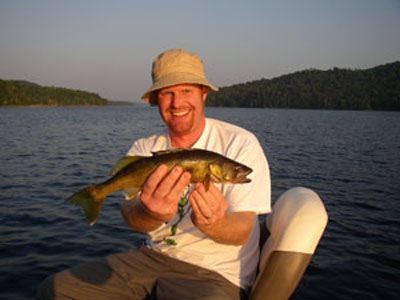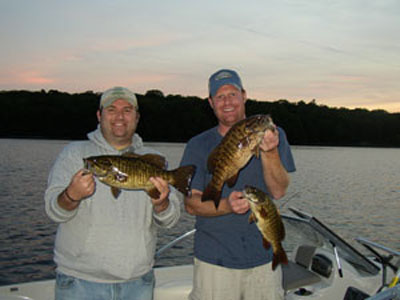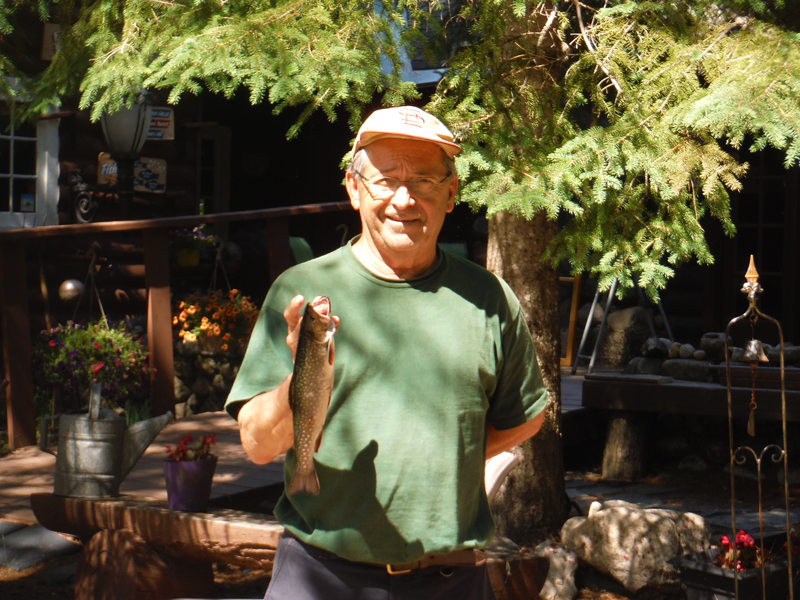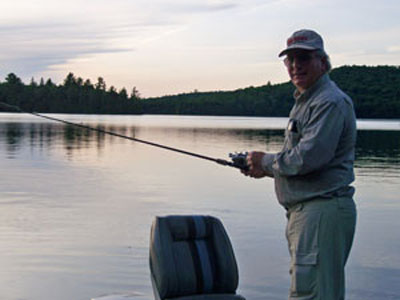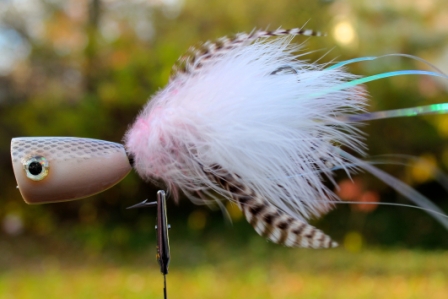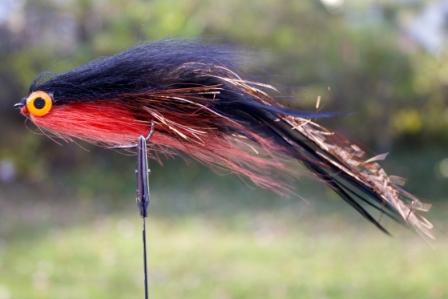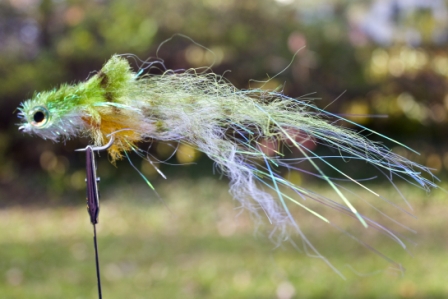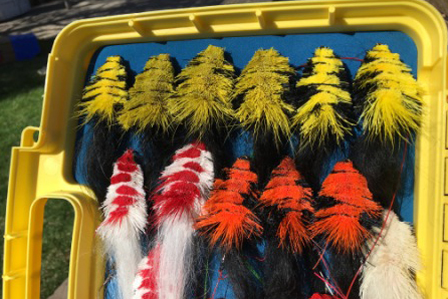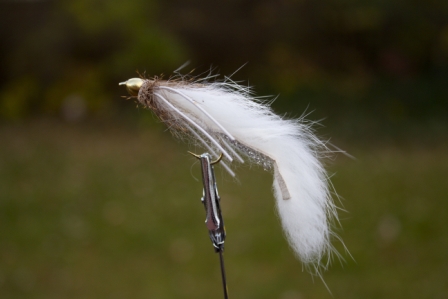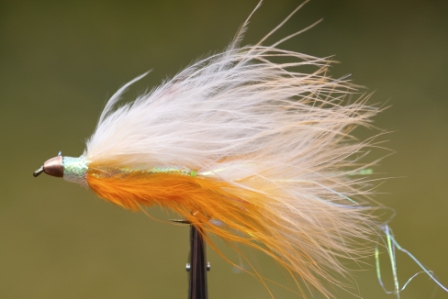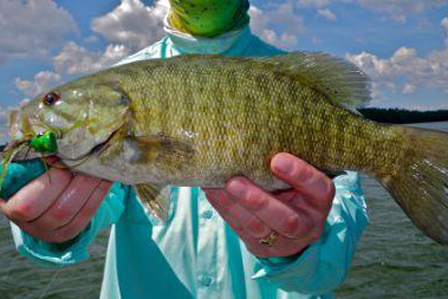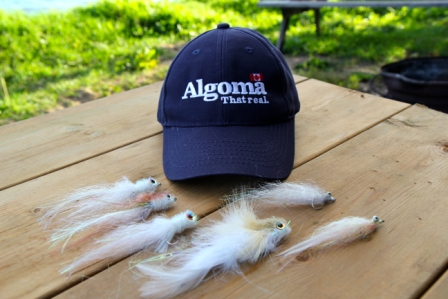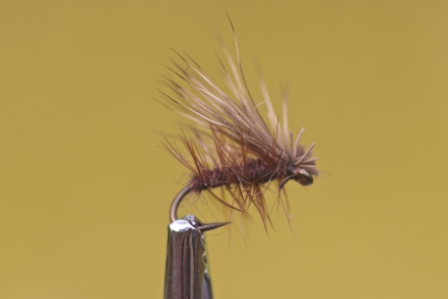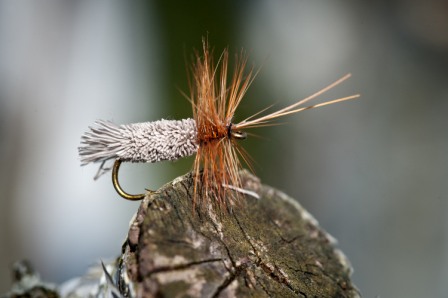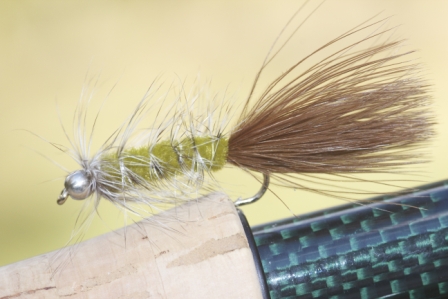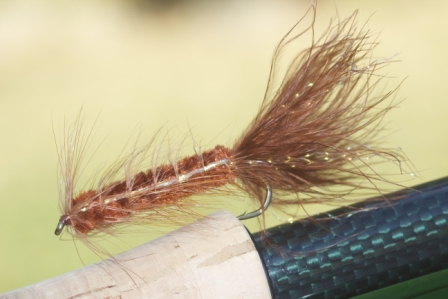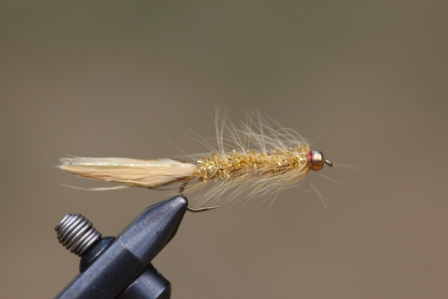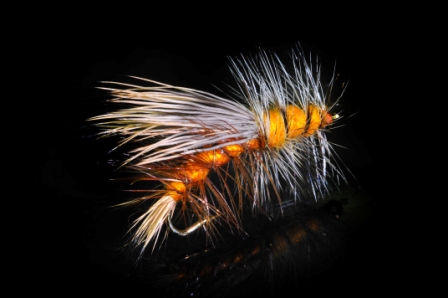For Some, It’s All About The Fishing…

Owners since 1987, Jim and Ann have guided many people, from beginner to expert, sharing with them their knowledge of the area’s ecosystem. We invite you to join us at the Outpost Lodge for your family fishing vacation!
You can have your choice here of HOW to fish–it’s the WHERE and WHEN that we’ll help you with. There is fly fishing, bait fishing, trolling, spinning, and casting for smallmouth bass, walleye, whitefish, lake trout and salmon. There are lakes, reservoirs and rivers, streams, brooks and ponds to explore, all within a seven-mile radius.
Fishing licenses and live bait (minnows and leeches) are available at the local Trading Post. We carry replacement tackle and Outpost Gear in our tack store.
You can have your choice here of HOW to fish–it’s the WHERE and WHEN that we’ll help you with. There is fly fishing, bait fishing, trolling, spinning, and casting for smallmouth bass, walleye, whitefish, lake trout and salmon. There are lakes, reservoirs and rivers, streams, brooks and ponds to explore, all within a seven-mile radius.
Fishing licenses and live bait (minnows and leeches) are available at the local Trading Post. We carry replacement tackle and Outpost Gear in our tack store.
When you arrive, we’ll supply you with maps and directions to all of our lakes and activities. We’ll go over fishing strategies and bring you up to speed on current conditions. We have fully equipped fishing boats for the exclusive use of our guests. We have canoes and kayaks free for your use!
Check out the latest fishing regulations at www.ontario.ca.
Fishing Made Easy
Jim has put together an informative summary for several popular fish.Walleye
What To Bring
- Rod and reel 5-7 ft. medium to light action, sensitive rod tip
- Line 4-10 lb. test
Terminal Tackle
- Snaps and swivels (10) Short shank small gap hooks #6-#10 (10)
- Long shank, small gap hooks #6-10 (10)
- Removable split shot lead weights 1/8 to 1/4 oz. (20)
- Lead head jigs; 1/4 oz., white, chartreuse and red (small gap if available) (10)
- Leaf spinner rig (Colorado) gold, silver, white or chartreuse (10)
- Trolling baits: large billed or deep diving floating style, natural colouration in spring, with red in summer, bright in fall E.g. Hot-n-tot, Shad rap, Wally Diver: 2in. in spring to 4 in. in fall
Live Bait
- Minnows: Small in spring, medium in summer and fall. Change water often and only carry two dozen per bucket in cool weather and one dozen in the heat of the summer. Wet and cover bucket with utility towel in summer to keep cool. On warm days, the evaporation of water from towel will cool off bucket.
- Leeches: replace water occasionally and keep out of direct sun light. A single ice cube in water keeps them very fresh.
- Worms: Greenhouse/Igloo. Keep out of direct sunlight and in the fridge when done fishing.
When To Fish
- Two hours before, until an hour after, both sunrise and sunset. Day time fishing is more difficult and tends to be in deeper, choppier water, on overcast days.
Where To Fish
When still fishing or vertical fishing, try 15-20 ft. of water in bays with in coming streams and hard bottoms. Fish seek out their food around rocks, boulders and sunken logs in hard bottomed bays. Your anchor is a depth finder. Simply let your anchor down to the bottom, one or two feet at a time, and count the depth. Tapping your anchor up and down can indicate the hardness and type of bottom. You can also find logs and other transitions this way.When trolling, start by finding 15 ft. of water with depth finder. Proceed at 2 mph parallel to shoreline, gradually moving shallower and deeper until your bait just ticks the bottom. Continue in this serpentine pattern till you hook up. Take note of changes in shoreline to help anticipate changing depth. It is dangerous to operate an outboard less than 10 ft. of water.
Fish shallows by anchoring or drifting in 15 feet of water and cast towards shore.
Smallmouth Bass
What To Bring
- Rod and reel 5-7 ft medium to light action, sensitive rod tip.
- Line 4-10 lb. test
Terminal Tackle
- Snap swivels (10), short and long shank hooks #6-10 (10)
- Assorted lead weights 1/8 to 3/4 oz.
- Lead headed jigs, nedrigs, twister tails 1/4 to 3/4 oz.
- Tube baits, jigs 1/4 to 1/2 oz.
- Artificial frogs: soft rubber, wacky worms
- French Spinners: Mepps, Rooster tails, Panther Martins, Black Fury #2 and #3
- Top water baits, crank baits: Zehra Spook (white), Hula popper (black), Rebel Crayfish (natural), Tiny torpedo, Shad Rap (crayfish)
Live Bait
- Worms, minnows, leeches, crickets. Leeches and crickets are the best live baits for smallmouth bass.
- Wild frogs must never be taken out of the environment because they have an important role to play, keeping the mosquitoes to a safe and balanced level.
When To Fish
- Mornings, just after sunrise and evening until dark are good times to fish. Cloudy overcast days, close to shadows and deep cover can be good for midmorning and midday fishing.
Where To Fish
- Directly in front of shallow points with deep water on either side.
- On the deep water edge of small bays with weed growth.
- Corners of islands with large boulders 10 – 15 ft. down.
- Outside edges of large weed beds.
- On top of sunken islands with deep water all around.
- Bays with sunken logs.
How To Fish
Using a small hook and weight with bait, cast out toward structure. Let drop to bottom before slowly retrieving. Jigs with twister tails, tube baits and drop-shot set ups can be used the same way. Spinners are the most productive and versatile – try different retrieves and speeds each cast. Top water baits need calm water conditions. Crank baits need to be trolled so that they dive relatively close to bottom structures – 2 mph!River Trout: Rainbow/Brook
What To Bring
- Rod and reel, light to medium weight
- Line 4-10 lb. test
Terminal Tackle
- Medium long shanked, snelled hooks
- Snap swivels
- French spinners; Mepps Black Fury #1-3 dressed, Rooster tails white
- Spoons: Little Cleo blue and silver, red and brass
Live Bait
- Night crawlers
When To Fish
- Dawn to dusk.
Where To Fish
- Look for dark water in shallow rivers indicating depth changes.
- In front of large boulders.
- Swirling eddies with foam.
- Any natural breaks in direction of water.
- Just below in coming streams.
How To Fish
Cast above area intended to fish. Let river current take baits through area. Control amount of line out, allowing no slack but letting line drop close to bottom. Retrieve line as slow as possible. Feel for hits. Set hook firmly and reel in continuously.Whitefish and Lake Trout
What To Bring
- Medium action rod
- 8-12 lb. test line
Terminal Tackle
- Ball bearing swivels
- Large snelled hooks; long & short shank
- Jigging spoons; Swedish pimples, Krocker spoons; Herring spoons
Live and Dead Bait
- Medium to large minnows
- Dead medium to small smelt
When To Fish
- The two hours after dawn and the two hours before sunset.
Where To Fish
Start on a 40 foot shelf drifting over 60 foot at most. Electronic depth finders are very helpful here.How To Fish
Vertical jigging is the most productive method. Let your spoon settle on bottom. Take up slack line. Close line bail and raise rod up to 12 o’clock. Then return spoon to bottom. Repeat and raise rod tip again. Continue jigging feeling the bottom each time. Anchoring in this depth of water is difficult, so drifting may be the only option. Calm evenings and mornings are preferable. Readjust your line to settle on bottom. Any strike or change in tempo, raise rod tip and start to reel up in preparation of a fish on your line. If so, continue to reel up with steady pressure. To fish dead bait, tie on a large snelled hook and above the ball bearing swivel, attach from 1/2 to 3/4 oz. weight. Drop the bait to the bottom and reel up any slack. Wait!In springtime, long line troll over 40′ shelf using modified herring spoons with single hooks or snelled stingers to replace treble hooks.
Pike
What To Bring
- Medium action rod
- 8-12 lb. test line
Terminal Tackle
- Large short shank single hooks.
- Wire leaders – black, assorted sizes.
- Sinkers – assorted large split shot from 1/4 to 1/2 oz.
- Ball bearing swivels.
- Bobbers – large
- Spinner baits – white or yellow
Live Bait
- Medium sucker minnows (3 – 4 inch)
When To Fish
- The three hours after sunrise and the three hours before dusk.
Where To Fish
- On the edges of weedbeds.
- On approach to narrows.
- Around sunken logs.
- In front of beaver houses.
How to Fish
For still fishing from a boat, rig up your line with a ball bearing swivel, a leader and a hook. Above the swivel, attach the weight. To attach your live minnow, stick the hook under the jaw and out through the nose. Let it drop to the bottom, leaving the minnow to swim with a little slack line. This same rig can be used at different depths by attaching a bobber. For the spinners, cast the edge of the weedbeds, let it drop and then retrieve quickly. Systematically cast along the edge. Try trolling your spinner baits between spots!Fly Fishing at The Outpost Lodge
The New Fly Fisher, Colin McKeown has put together the following suggestions for fly fishing in our area.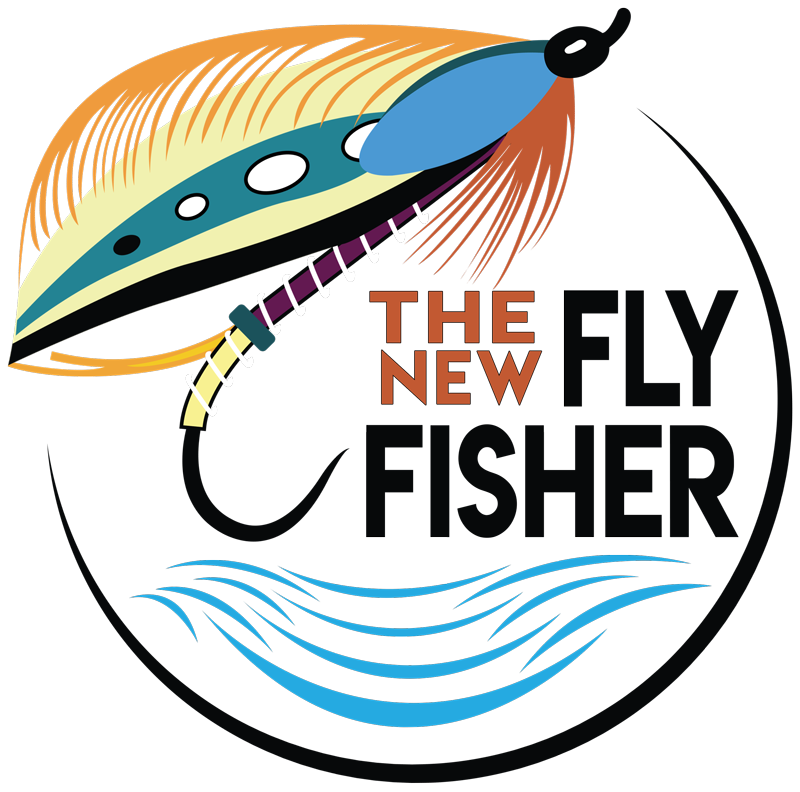
Northern Pike
The main forage base for pike in most lakes are perch, walleye, cisco and white fish. Large streamers, such as Deceivers, 6″-10″ long tied on #1/0 to #4/0 hooks, are an excellent choice in red/white, green/white and even orange/black. Murdich minnows in white, white/green and orange/black are also an excellent streamer pattern to use for pike. These are the prime subsurface patterns. Surface patterns such as Dahlberg Divers, Weedman’s Slider or large tarpon poppers in black, green and brown are great for triggering explosive surface strikes!! Pike tend to hang around on the edges of weed beds, near fallen trees, sunken humps and points usually in water of no more than 5-12 feet deep. These are the prime places to target with both surface and subsurface patterns. Of course casting around river mouths is also a good bet as post-spawn walleye are attacked by big pike as they emerge back in the lake.
Rods should be 9-10 feet in length in a size #8 – #10 weight fast-action models with sufficient backbone to punch out big flies into the wind and to handle big, strong fish, along with a wide arbor reel with plenty of backing. A floating weight forward (preferably a specialty pike taper) line is standard, but a sink tip (type #3 with a sink rate of 2-3 inches per second) comes in use for getting big streamers down deep quickly. For a leader, use a six-foot length of 50lb mono or fluorocarbon, with two feet of wire as a bite tippet. RIO Bite wire in 20 or 30lb strength is perfect.
Rods should be 9-10 feet in length in a size #8 – #10 weight fast-action models with sufficient backbone to punch out big flies into the wind and to handle big, strong fish, along with a wide arbor reel with plenty of backing. A floating weight forward (preferably a specialty pike taper) line is standard, but a sink tip (type #3 with a sink rate of 2-3 inches per second) comes in use for getting big streamers down deep quickly. For a leader, use a six-foot length of 50lb mono or fluorocarbon, with two feet of wire as a bite tippet. RIO Bite wire in 20 or 30lb strength is perfect.
Smallmouth Bass
Flies for smallmouth bass include crayfish and Woolly Bugger patterns of differing sizes and colors work equally well. Top color choice include tan, brown and especially olive or green. However, if you want to catch some truly epic smallmouth, then using streamer patterns is the way to go in Algoma. Muddlers, Deceivers and strip leeches are all effective, but the best are smelt patterns. In fact, these are considered the best fly to use when searching for big brook trout as well. Smelt are abundant throughout Algoma and, since they provide year-round forage, they are key prey for smallmouth. Most Algoma smelt range between 4″ to 6″, with back colouration varying from brown to dark green and with white/silver sides. Including these is key to any successful pattern design. Top patterns include “Scotty’s McFly”, white zonkers and Murdich Minnows in white or white/tan. For poppers, favourite colours in order of choice are: yellow, orange, black and green. For some reason, probably due to the tannic stain in many waters, yellow and orange work exceptionally well. Smaller poppers in sizes 2 to 6 work best.
Most fly fishers find rods of 8 ½ – 9 feet in length in 5 or 6 weight are ideal for bass fishing. Simple action reel are all you need, no heavy-duty drags. You want to ensure you bring a weight-forward floating line for all your topwater and shallow water fishing. However, you also want to have an intermediate fly line to or sink-tip to fish deeper areas such as drop-offs or shoals for smallmouth.
Most fly fishers find rods of 8 ½ – 9 feet in length in 5 or 6 weight are ideal for bass fishing. Simple action reel are all you need, no heavy-duty drags. You want to ensure you bring a weight-forward floating line for all your topwater and shallow water fishing. However, you also want to have an intermediate fly line to or sink-tip to fish deeper areas such as drop-offs or shoals for smallmouth.
Brook Trout
The brook trout in the streams and river of Algoma average 8-18 inches in size, but sometimes some massive fish can be caught. For fly fishers, the most success can be had on the small streams and rivers which hold good numbers of trout. For dry flies, we recommend: Goddard Caddis sizes #10-16, Elk Hair Caddis sizes #10-16, Kaufman Stimulators, # 8-12 in Olive, Yellow, and Orange. If the brook trout are not rising, then we recommend you use some good streamer patterns including: Woolly Buggers in black, purple and white, #4-8. A gold woolly bugger with bead-head has been found to be very deadly with trout, probably due to the tannin stained waters. Scotty McFly’s work well for both trout and bass, our favorite size is 4-6.
For most of the trout fishing, we recommend you bring a 4 to 6 weight rod in 8-10 foot lengths. For most fishing you will only need a Weight-Forward floating line and long leaders in 8-10 foot lengths.
For most of the trout fishing, we recommend you bring a 4 to 6 weight rod in 8-10 foot lengths. For most fishing you will only need a Weight-Forward floating line and long leaders in 8-10 foot lengths.

